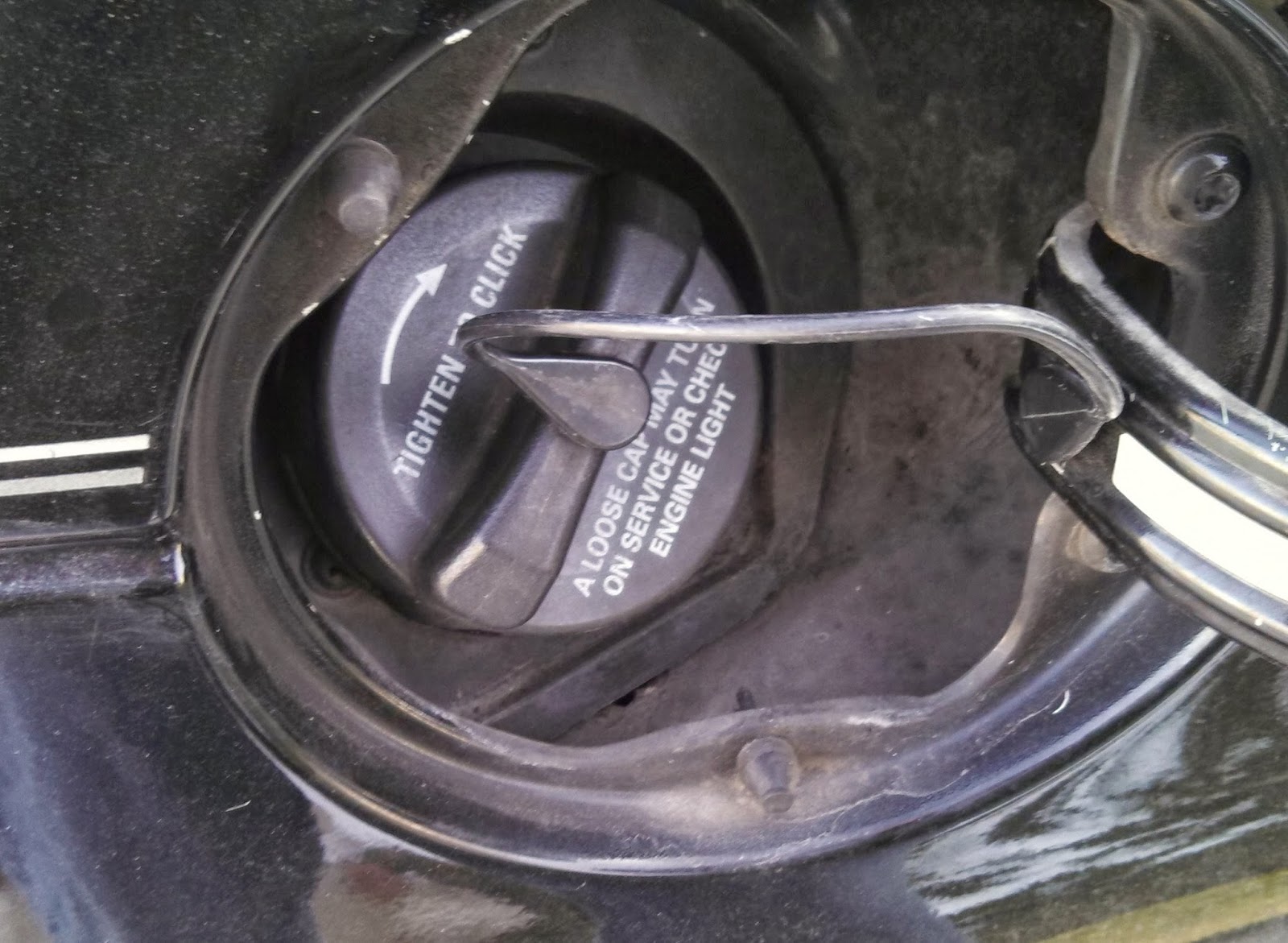That Pesky Gas Cap Light: Why It's On and How to Fix It
Is that little gas cap light mocking you from your dashboard? It's a minor annoyance that can quickly escalate into a frustrating mystery, especially if you're sure you tightened the cap. Before you resign yourself to costly mechanic visits, let's explore why that gas cap light keeps illuminating and how to conquer it, potentially saving you a chunk of change.
The persistent glow of the check engine light, often triggered by a loose or faulty gas cap, is more than just a visual nuisance. It's a signal from your car's onboard diagnostic system (OBD-II) that something isn't right with your fuel system's evaporative emission control (EVAP) system. This system is designed to prevent fuel vapors from escaping into the atmosphere, contributing to air pollution.
The EVAP system, mandated in vehicles since the mid-1990s, plays a crucial role in environmental protection. A loose, damaged, or missing gas cap is the most common culprit behind EVAP system leaks, triggering that pesky check engine light. While a seemingly small issue, a faulty gas cap can lead to decreased fuel efficiency and increased emissions.
Ignoring a persistent check gas cap light isn't just bad for the environment; it can also hit your wallet. Besides the obvious waste of fuel, a malfunctioning EVAP system can lead to more serious problems down the line, requiring expensive repairs. Identifying and addressing the issue promptly can prevent these larger headaches.
So, before you dismiss that glowing light as a minor inconvenience, understand that it's your car's way of telling you something needs attention. Taking action now can save you money, reduce your environmental impact, and ensure your vehicle runs smoothly.
The gas cap itself is a simple device, but it plays a vital role. It seals the fuel tank, preventing fuel vapors from escaping and maintaining the proper pressure within the system. When the seal is compromised, the OBD-II system detects the leak and illuminates the check engine light.
A simple test is to tighten the gas cap firmly. Sometimes, we're in a hurry and don't give it that extra click. If the light persists after a few driving cycles, further investigation is necessary. Inspect the gas cap for cracks, damage, or a missing seal. A damaged cap should be replaced immediately. A relatively inexpensive part, a new gas cap can often resolve the issue.
If a new gas cap doesn't extinguish the light, the problem might lie within the EVAP system itself. This could involve a faulty vent valve, a leak in the hoses, or a malfunctioning sensor. At this point, it's best to consult a mechanic to diagnose and repair the issue.
Advantages and Disadvantages of the Check Gas Cap Light System
| Advantages | Disadvantages |
|---|---|
| Early warning of potential EVAP system issues | Can be triggered by minor issues like a loose cap |
| Helps prevent costly repairs by identifying problems early | Can sometimes be a false alarm, requiring diagnostic checks |
Frequently Asked Questions:
Q: My check engine light is on, but I tightened the gas cap. What now? A: Drive for a few days. The light may reset itself. If it persists, inspect the cap for damage or consult a mechanic.
Q: How much does a new gas cap cost? A: Gas caps are relatively inexpensive, typically ranging from $10 to $30.
Q: Can I drive with the check engine light on? A: While you can often drive short distances, it's best to address the issue promptly to prevent further damage.
Q: Can I reset the check engine light myself? A: Yes, you can use an OBD-II scanner to reset the light, but this won't fix the underlying issue.
Q: What if the light comes back on after replacing the gas cap? A: The problem might be within the EVAP system. Consult a mechanic.
Q: How often should I check my gas cap? A: Visually inspect your gas cap every time you fill up your tank.
Q: Is a loose gas cap bad for my car? A: Yes, it can decrease fuel efficiency and lead to EVAP system issues.
Q: Can a bad gas cap cause my car to fail emissions testing? A: Yes, a faulty gas cap can lead to increased emissions, causing your car to fail the test.
Tips and Tricks:
Always tighten your gas cap until you hear several clicks. This ensures a proper seal. Regularly inspect your gas cap for cracks or damage. Replace it if necessary.
In conclusion, the check gas cap light, while seemingly minor, plays a crucial role in maintaining your vehicle's efficiency and protecting the environment. Addressing the issue promptly, whether it's a simple loose cap or a more complex EVAP system problem, can save you money on repairs and contribute to a cleaner environment. By understanding the importance of this small but significant warning light, you can take proactive steps to keep your car running smoothly and efficiently for years to come. Don't ignore the warning signs; address them promptly and enjoy the benefits of a well-maintained vehicle and a healthier planet. Take action today and ensure your car is running at its best!
Uni ball vision fine pens the ultimate guide to smooth writing
Seeking financial harmony how to open a bank account in line with islamic principles
Coastal hues seaside charm beach cottage paint colors















